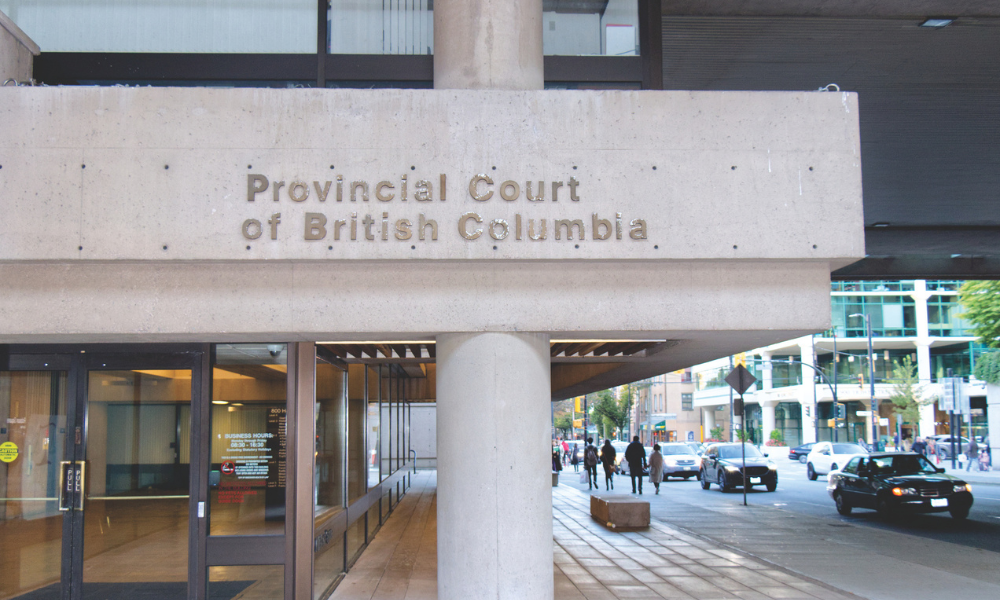The Alberta Court of Appeal released a surprising decision in Andriuk v. Merrill Lynch Canada Inc., in which it has imported the obligation of establishing evidence of class-wide loss from the specialized field of price-fixing actions to a claim grounded in breach of contract and breach of fiduciary duty causing a depreciation in share price.
Finding there was no evidence adduced by the plaintiff demonstrating a method of proving aggregate loss on a class-wide basis, certification was denied at first instance, and upheld on appeal.
The claim arose as a result of the Calgary office of Merrill Lynch allegedly failing to employ adequate internal controls, which resulted in it (through clients and brokers) holding a concentrated or control block position (22 per cent) of a thinly traded, speculative junior biotech stock, Oncolytics Biotech Inc.
The plaintiffs alleged this put Merrill Lynch offside of various securities rules and regulations. The focus of the plaintiffs’ claim was when Merrill Lynch discovered the problem, it undertook to reduce its holdings in ONC through a variety of measures over a short period of time, without regard to the affect it would have on the class, and solely to protect its own interests.
The plaintiffs asserted given Merrill Lynch’s divestiture represented the entire sell side of the market, its conduct resulted in the ONC stock losing value (an inevitable result known to Merrill Lynch), to the detriment of the class. This was the plaintiffs’ case on causation.
The action is different than a traditional securities fraud case, where the alleged misconduct typically involves misrepresentations by the public issuer that artificially inflate share value, causing loss to those who purchase the shares at a price exceeding true market value. However, there are similarities.
In both situations, the shares have a true market value. In both cases, the price of the shares is affected (positively or negatively) as a result of the conduct of the defendant, and the artificial change in the value of the shares from their market value is the primary measure of the loss — subject, of course, to consequential damages that may flow from individual circumstances, and would be determined at an individual assessment of damages following the common issues trial.
In the case of Merrill Lynch’s clients, and the others who held ONC securities, if they sold the ONC shares during the period of artificial depression, the measure of the loss would have been the delta between the reduced price and the true market value of the shares.
Unfortunately, the plaintiffs chose not to lead any evidence of how the class’ loss could be measured, nor any expert evidence that would have spoken to the merits-based question of whether the defendant’s conduct caused or contributed to the reduced share price. Here, that failure was fatal to the claim.
The Court of Appeal concluded it was bound by the Supreme Court of Canada’s decision in Pro-Sys Consultants Ltd. v. Microsoft Corp. and followed the result in the Ontario Court of Appeal’s decision Chadha v. Bayer Inc.. Particularly, the Alberta appeal court held where questions relating to causation or damages are proposed as common issues, the plaintiff must provide evidence there is a workable methodology for determining those issues on a class-wide basis.
However, both Chadha and Pro-Sys are entirely distinguishable from Merrill Lynch. Both of these decisions addressed the question of establishing a price-fixing overcharge (the damage), which is a requisite element of a claim for a price-fixing conspiracy, was in fact passed on to the indirect purchasers of the product containing the overcharged item as a constituent part.
In Merrill Lynch, the plaintiff did not have to prove common impact; the evidence of the depreciation in price was patent in the depressed value of the stock held by all class members. In other words, unlike an indirect purchaser of a product that has one element of it that may have been sold at an inflated value to a direct purchaser, who then may or may not have passed along the overcharge, here the affected property (the shares) are directly affected by the conduct that caused their price to go down.
There is no need to adduce evidence at certification that a workable methodology can be established to prove causation — it will come out from the evidence at trial, just like in any securities case where various factors might come into play in affecting the share price. If there is evidence the court finds credible that demonstrates the defendant’s conduct in dumping thinly traded shares resulted in a depressed share price, then causation is established. This does not require a specialized economic modelling methodology such as that required to prove pass through of inflated prices.
On closer analysis, it appears the real problem with Merrill Lynch may have had less to do with missing evidence on how to measure damage on a class-wide basis than with the fact the claim had not been pleaded with clarity and sufficient particularity, which lead the court to be confused about the nature of the claims the plaintiffs were asserting versus the heads of damages that might be claimed on an individual basis by the class.
There was no evidence, nor a proper pleading before the court, to demonstrate or allege the conduct of the defendant precipitated the depressed stock price. Whether Merrill Lynch’s conduct caused a decrease in the value of the stock is an ideal common issue, and there was sufficient evidence led at the hearing to establish that as a credible common issue, but the pleading did not pass muster with the court. So in many respects it may be this is one of those unfortunate situations where a bad case has resulted in bad law.
Nonetheless, in my view, to the extent Merrill Lynch suggests a plaintiff must lead proof of a workable methodology for proof of causation in a securities class action, I respectfully suggest the Alberta Court of Appeal got it wrong.
The plaintiffs need to show there has been a change in the stock price, and some evidence a court could find links to the change to the defendant’s conduct. That is sufficient evidence to establish there is a common issue about whether the defendant’s conduct was in fact the cause of the price drop. At trial, the parties will then lead evidence in the ordinary course of event studies or other expert evidence. But for the purposes of the certification descending that deeply into the merits of the case should be avoided.
Finding there was no evidence adduced by the plaintiff demonstrating a method of proving aggregate loss on a class-wide basis, certification was denied at first instance, and upheld on appeal.
The claim arose as a result of the Calgary office of Merrill Lynch allegedly failing to employ adequate internal controls, which resulted in it (through clients and brokers) holding a concentrated or control block position (22 per cent) of a thinly traded, speculative junior biotech stock, Oncolytics Biotech Inc.
The plaintiffs alleged this put Merrill Lynch offside of various securities rules and regulations. The focus of the plaintiffs’ claim was when Merrill Lynch discovered the problem, it undertook to reduce its holdings in ONC through a variety of measures over a short period of time, without regard to the affect it would have on the class, and solely to protect its own interests.
The plaintiffs asserted given Merrill Lynch’s divestiture represented the entire sell side of the market, its conduct resulted in the ONC stock losing value (an inevitable result known to Merrill Lynch), to the detriment of the class. This was the plaintiffs’ case on causation.
The action is different than a traditional securities fraud case, where the alleged misconduct typically involves misrepresentations by the public issuer that artificially inflate share value, causing loss to those who purchase the shares at a price exceeding true market value. However, there are similarities.
In both situations, the shares have a true market value. In both cases, the price of the shares is affected (positively or negatively) as a result of the conduct of the defendant, and the artificial change in the value of the shares from their market value is the primary measure of the loss — subject, of course, to consequential damages that may flow from individual circumstances, and would be determined at an individual assessment of damages following the common issues trial.
In the case of Merrill Lynch’s clients, and the others who held ONC securities, if they sold the ONC shares during the period of artificial depression, the measure of the loss would have been the delta between the reduced price and the true market value of the shares.
Unfortunately, the plaintiffs chose not to lead any evidence of how the class’ loss could be measured, nor any expert evidence that would have spoken to the merits-based question of whether the defendant’s conduct caused or contributed to the reduced share price. Here, that failure was fatal to the claim.
The Court of Appeal concluded it was bound by the Supreme Court of Canada’s decision in Pro-Sys Consultants Ltd. v. Microsoft Corp. and followed the result in the Ontario Court of Appeal’s decision Chadha v. Bayer Inc.. Particularly, the Alberta appeal court held where questions relating to causation or damages are proposed as common issues, the plaintiff must provide evidence there is a workable methodology for determining those issues on a class-wide basis.
However, both Chadha and Pro-Sys are entirely distinguishable from Merrill Lynch. Both of these decisions addressed the question of establishing a price-fixing overcharge (the damage), which is a requisite element of a claim for a price-fixing conspiracy, was in fact passed on to the indirect purchasers of the product containing the overcharged item as a constituent part.
In Merrill Lynch, the plaintiff did not have to prove common impact; the evidence of the depreciation in price was patent in the depressed value of the stock held by all class members. In other words, unlike an indirect purchaser of a product that has one element of it that may have been sold at an inflated value to a direct purchaser, who then may or may not have passed along the overcharge, here the affected property (the shares) are directly affected by the conduct that caused their price to go down.
There is no need to adduce evidence at certification that a workable methodology can be established to prove causation — it will come out from the evidence at trial, just like in any securities case where various factors might come into play in affecting the share price. If there is evidence the court finds credible that demonstrates the defendant’s conduct in dumping thinly traded shares resulted in a depressed share price, then causation is established. This does not require a specialized economic modelling methodology such as that required to prove pass through of inflated prices.
On closer analysis, it appears the real problem with Merrill Lynch may have had less to do with missing evidence on how to measure damage on a class-wide basis than with the fact the claim had not been pleaded with clarity and sufficient particularity, which lead the court to be confused about the nature of the claims the plaintiffs were asserting versus the heads of damages that might be claimed on an individual basis by the class.
There was no evidence, nor a proper pleading before the court, to demonstrate or allege the conduct of the defendant precipitated the depressed stock price. Whether Merrill Lynch’s conduct caused a decrease in the value of the stock is an ideal common issue, and there was sufficient evidence led at the hearing to establish that as a credible common issue, but the pleading did not pass muster with the court. So in many respects it may be this is one of those unfortunate situations where a bad case has resulted in bad law.
Nonetheless, in my view, to the extent Merrill Lynch suggests a plaintiff must lead proof of a workable methodology for proof of causation in a securities class action, I respectfully suggest the Alberta Court of Appeal got it wrong.
The plaintiffs need to show there has been a change in the stock price, and some evidence a court could find links to the change to the defendant’s conduct. That is sufficient evidence to establish there is a common issue about whether the defendant’s conduct was in fact the cause of the price drop. At trial, the parties will then lead evidence in the ordinary course of event studies or other expert evidence. But for the purposes of the certification descending that deeply into the merits of the case should be avoided.







